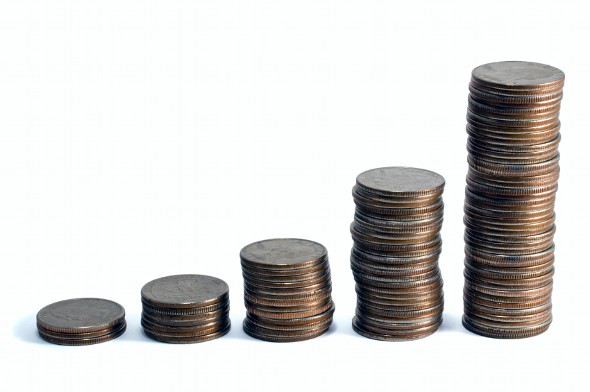Investing requires quite a bit of time and effort. In order to choose the right mix of stocks, bonds and cash investments for your portfolio, you’ll need to spend some time researching your options. And unless you plan on putting your investments on autopilot, you’ll have to make time to rebalance your portfolio and ensure that fees aren’t eating up your earnings. Depending on the investments you have, it might take time to see the kinds of returns that you’re looking for. In the meantime, you might be able count on something known as compound interest. For help understanding how compound interest can build your wealth, consider working with a financial advisor.
What You Should Know About Compound Interest
Compound interest is a powerful tool for investors. Interest is basically the fee you pay for borrowing or the fee you charge for giving someone else access to your invested funds. Compound interest is defined as the interest that’s generated from existing earnings. When interest compounds, you earn interest on the money you invest (or save) and you earn interest on top of the interest you’ve previously earned.
If you don’t have an investment or savings account with compound interest, you probably have one that’s earning simple interest. The key difference between simple interest and compound interest lies in the fact that simple interest only allows you to earn interest on the money you originally put into an account.
Compound interest isn’t just relevant to investors and super savers. It’s also an important factor to consider when you’re taking out a loan. If a borrower has a loan with compounding interest, any accrued interest eventually gets added onto the outstanding loan balance.
Thanks to that additional interest, your loan balance increases and you end up paying interest on top of the interest you already owe. In contrast, if you have a loan with a simple interest rate, interest does not compound and you’re only required to pay interest on the principal loan balance.
Calculating Compound Interest

Take a look at the compound interest formula: [P (1 + i)n] – P. In the formula, P represents your principal loan balance or investment and i represents your interest rate.
Part of what gives compound interest its immense power is n, or the number of times that interest compounds. The more frequently interest compounds, the faster your investment or your savings can grow. As you weigh the pros and cons of sticking your money in one savings account over another, you’ll see that some have interest that compounds monthly or daily while others have interest that compounds twice a year, quarterly or annually. When interest accrues more than once in one year, interest is said to be growing periodically.
In the simple interest formula, there’s no compounding. To calculate simple interest, you simply multiply the principal by the interest rate. From there you can multiply the product by the length of time that you’re saving or investing.
Wondering how interest is compounded? We’ll give you an example.
Let’s say you purchase a five-year certificate of deposit that compounds annually at an interest rate of 2.25%. If you deposit $1,000 into that account, after the first year you’ll earn $22.50 in interest. After two years, you’ll have $45.51 in interest. After five years, you’ll have $117.68 in interest.
Our example shows that the interest you earned in the first year ($22.50) generates its own interest at the end of year two. That process continues year after year until you withdraw your earnings.
Types of Compound Interest
Continuous interest is one type of compound interest. When there’s continuous compounding, interest is essentially growing rapidly without stopping. Interest constantly accrues infinitely, making the compounding period seem relatively small since the amount of interest continues to expand.
The continuous compounding formula is P x ert. In that equation, P refers to the principal amount, r refers to the interest rate and t refers to the rate of time, in years. The value e represents the base rate and the idea that something is growing continuously. If you do some research, you might be lucky enough to come across a bank account with interest that’s compounded continuously.
The Bottom Line

With compound interest, investors can watch their funds grow at a fast pace as their interest earns interest over time. How often compounding takes place matters. That means interest that compounds monthly or quarterly will increase more quickly than interest that only compounds twice a year.
An investor who finds an investment opportunity with interest that compounds on a regular basis (or even continuously) has a significant advantage over an investor working with a simple interest rate.
Financial Planning Tips
- A financial advisor can help you maximize your interest. Finding a qualified financial advisor doesn’t have to be hard. SmartAsset’s free tool matches you with up to three financial advisors who serve your area, and you can interview your advisor matches at no cost to decide which one is right for you. If you’re ready to find an advisor who can help you achieve your financial goals, get started now.
- Use SmartAsset’s free investment calculator to see how your money could grow.
Photo credit: ©iStock.com/erierika, ©iStock.com/fotostorm, ©iStock.com/sosb
